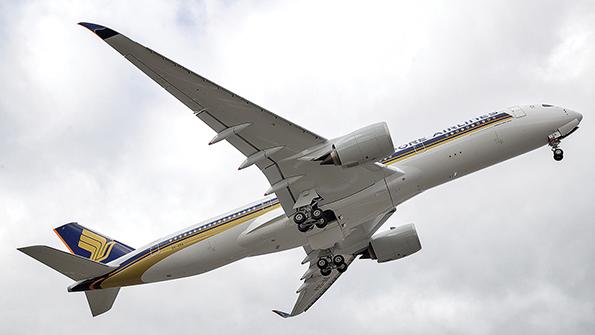
Singapore Airlines is one of the few carriers in Southeast Asia to raise its capacity beyond pre-pandemic levels.
Asia-Pacific airline capacity on international routes is moving closer to full recovery, driven by growing fleet numbers that have already surpassed pre-pandemic levels.
While international seat capacity in the Asia-Pacific region has not rebounded as quickly as the global average or that of other regions such as Europe and North America, the gap is closing. The Asia-Pacific in-service aircraft total has been boosted by new deliveries and parked aircraft returning to service.
The fleet and capacity recoveries paint a backdrop of an increasingly healthy industry in advance of the Singapore Airshow. This is resulting in a greater appetite for investment at many airlines.
- The region’s international capacity is close to 85% of pre-pandemic levels
- Narrowbody increase has lifted overall fleet numbers
Asia-Pacific international capacity in the week of Jan. 29 reached 84.7% of the level of the same week in 2020, just before the COVID-19 pandemic decimated airline operations, data from CAPA – Center for Aviation and OAG show. This recovery percentage is the highest since the pandemic began, and the gap between the Asia-Pacific number and the global average is the narrowest it has been during this period.
International capacity recovery in North America is at 100.7%, and Europe’s is at 95.9%. The global average is close to 100%.
Asia-Pacific domestic capacity has exceeded levels from the same point in 2020, as internal travel rebounded more quickly than international. This has lifted systemwide capacity for Asia-Pacific airlines to 96.8%.
Growth in aircraft numbers does not track exactly with capacity recovery, as changes in aircraft size and utilization rates are major variables. And while there is a large discrepancy between fleet growth and international capacity gains, the fleet increase is more similar to the stronger domestic and system rebounds.
There were 9,020 aircraft in service with Asia-Pacific airlines as of Jan. 31, according to the CAPA database. This exceeds the total of 8,884 in January 2020 and represents the third successive month in which the total has surpassed the corresponding pre-pandemic level.
Within the fleet total, recovery rates vary depending on aircraft category. For example, widebody aircraft numbers are still below their pre-pandemic levels. There were 1,650 of these in service by the end of January, compared with 1,783 in the same month in 2020.
In contrast, there were 5,804 narrowbody aircraft in service as of Jan. 31, exceeding the 5,502 in service in January 2020. This helps explain why systemwide seat capacity has not recovered as quickly as the fleet total, as there is now a slightly higher proportion of narrowbodies in service than before the pandemic.
The Asia-Pacific region is vast and diverse, so there is considerable variation in international capacity recovery underlying the region’s overall rate of just under 85%.
International seat capacity in the South Asia subregion has rebounded most strongly, reaching 104.3% of pre-pandemic levels. This reflects the booming travel market in India. Capacity in the southwest Pacific sector has also recovered well and is at 90.1% versus January 2020.
Southeast Asia’s international capacity has reached 80%. This subregion initially saw the strongest post-pandemic rebound within the broader Asia-Pacific zone, but it has since been overtaken. Some carriers in Southeast Asia, such as Singapore Airlines, have raised their international capacity beyond pre-COVID-19 levels, while others, such as Garuda Indonesia and Thai Airways, have cut their fleets back significantly.
Singapore Airlines’ capacity is at 106% of January 2020 figures, Thai’s international capacity is at 67%, and Garuda’s is at just 54.5%, indicating the wide degree of contrast in airline recovery in the region.
Northeast Asia has for some years lagged the other three subregions in capacity restoration, although it is now catching up relatively quickly. Its international capacity reached 75.5% of 2020 levels by Jan. 29.
Northeast Asia has trailed for so long because countries such as China and Japan were among the most conservative in Asia in removing pandemic-era travel restrictions. Although outbound leisure travel from China and Japan has not recovered as much as expected, airlines are still boosting international capacity in these markets.
As with capacity, passenger traffic in the Asia-Pacific region has also been increasing. International passenger numbers in the region reached 84.2% in December 2023 compared with the same month in 2019, data from the Association of Asia Pacific Airlines shows. The group forecasts that international traffic will return to pre-pandemic levels this year despite macroeconomic and geopolitical risks.
